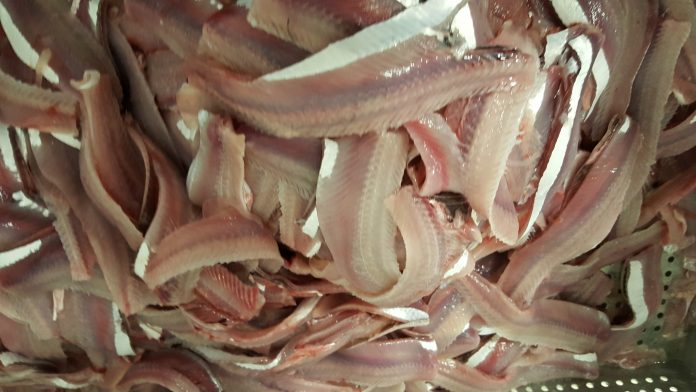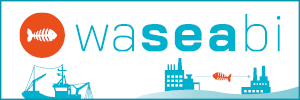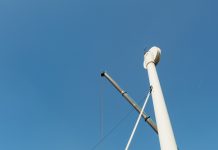Charlotte Jacobsen, Professor and Head of Research Group at the National Food Institute, Technical University of Denmark, explains how the WaSeaBi project will ensure sounder exploitation of aquatic resources
The seafood processing industry is a highly important industry with an overall turnover of nearly €28 billion and employing more than 122,000 people in the EU(1). However, the industry is facing a big challenge as the current exploitation of the aquatic biomass is unsustainable because up to 70% of the aquatic resources end up as side-streams, which are either used for low-value purposes, for example, mink feed, fish meal or, in worse cases, are wasted. In light of the fact that food production needs to increase by 60-70% by 2050 due to the growing population, this practice needs to be changed. This is not an easy task because a number of challenges and bottlenecks must be addressed before side-streams can be utilised for food purposes. For some fish species, a major challenge is that side-streams are not sorted into guts, heads, tails and frames, which makes it impossible to utilise the different types of side-streams for different purposes.
Further, mixing everything together causes contamination of blood, enzymes and fat on otherwise clean parts, such as the backbones. Another major challenge is the current practice of treating the side-streams as a waste product instead of as a raw material of high quality intended for human consumption. This means that the shelf life of side-streams is very short, and their quality is currently low. To change this practice, new sorting and storage solutions must be developed. Furthermore, our current knowledge about consumer acceptance of food products made with ingredients produced from seafood side-streams is limited, which makes the development of such products risky. Finally, new scalable technological solutions to convert seafood side-streams into new food products and ingredients must be developed and implemented in the industry.
How the WaSeaBi project will solve the challenges
The WaSeaBi project was initiated in May 2019 with the aim of solving the above-mentioned challenges that prevent more sound exploitation of our aquatic resources. This will be obtained by developing storage solutions for the side-streams and sorting technologies for small pelagic fish, as well as decision tools that will secure an efficient, sustainable supply system for both by-catches and side-streams from seafood processing industries. The decision tools will help the seafood producer to make the right decision about how to utilise the different side-streams.
Furthermore, WaSeaBi’s objective is to develop technologies to produce:
- Bioactive peptides for nutraceutical, food and feed applications.
- Protein-based food ingredients.
- Savoury ingredients and mineral supplements for food and feed.
Together, these solutions will enable the valorisation of side-streams into new food ingredients and food products. In WaSeaBi, we are using liquid and/or solid side-streams from mussels, mackerel, hake, salmon, cod and herring.
To guide the development and prioritisation of which ingredients could be produced from the different types of side-streams, the commercial potential of the produced ingredients will be evaluated and specific environmental, economic and social impacts of the proposed solutions will be quantified.
Furthermore, WaSeaBi will perform consumer studies in different EU countries to understand which motives or barriers consumers might have in relation to buying food products made from ingredients from seafood side-streams. This will help the industry to develop the right tools to explain to consumers that foods made with ingredients from seafood side-streams are sustainable and healthy and do not pose any risks.
Promising results have already been obtained
During the first 18 months of the project, WaSeaBi has already obtained several promising results. First of all, the above-mentioned consumer study has been completed. Preliminary results show that if foods containing ingredients from seafood side-streams are of high eating quality and if information about the origin and type of raw material used are provided, then consumer barriers can be overcome and consumers will be motivated to buy such products.
Secondly, WaSeaBi has implemented a new technology for sorting herring side-streams into guts, heads, tails and frames at the seafood company Scandic Pelagic. We are currently investigating seasonal variations in the composition and quality of the different herring side-streams. This knowledge can be used to decide on potential application possibilities for the different side-streams, which can now be looked upon as new raw materials, in addition to classic fillets.
Furthermore, we have developed methods to preserve the quality of herring side-streams by dipping or rinsing them in solutions based on, for example, different rosemary extracts(2). The same antioxidant preparation is currently being tested also on cod side-streams from Royal Greenland. Preliminary results are in accordance with the positive results obtained with herring.
WaSeaBi has also developed the first version of the decision tool, which is now being tested on the mussel side stream value chains. The decision tool is an app, which guides the seafood producer on what to do with their side-stream based on the information that is entered into the app about the raw material, the side-stream and the processes it has been exposed to, etc.
Moreover, WaSeaBi has taken the first steps to develop bioactive peptides, as well as savoury ingredients with umami taste from salmon and cod side-streams. Different enzyme cocktails are used to produce the bioactive peptides and the savoury ingredients. The bioactive peptides are currently being tested for their antimicrobial and antioxidative properties. The savoury ingredients have been demonstrated to be rich in glutamic acid, which is responsible for umami flavour. In the near future, sensory tests will be carried out on the savoury ingredients produced.
Want to learn more?
Go to www.waseabi.eu or watch the video WaSeaBi: Optimal utilization of seafood sidestreams through the design of new holistic process lines for more information and follow the project on LinkedIn for frequent updates.
Literature:
(1) Scientific, Technical and Economic Committee for Fisheries (STECF), The Economic Performance Report on the EU Fish Processing Sector (STECF-14-21), Luxembourg, Publications Office of the European Union, 2014 (Report EUR 27029 EN, JRC 93340).
(2) Wu, H., Ghirmai, S., & Undeland, I. (2020). Stabilization of herring (Clupea harengus) by-products against lipid oxidation by rinsing and incubation with antioxidant solutions. Food Chemistry, 316, 126337.
Please note: This is a commercial profile












